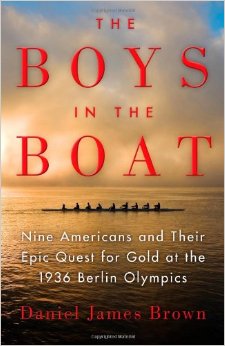Kai Bird’s new book “The Good Spy: The Life and Death of Robert Ames” tells the story of Ames, a U.S. diplomat killed in the 1983 bombing of the American embassy in Beirut who was actually the CIA’s most informed and valuable operative in the Middle East.
‘The Good Spy: The Life and Death of Robert Ames’
by Kai Bird
Crown, 448 pp., $26
On April 18, 1983, a truck bomb exploded in front of the American Embassy in Beruit, killing 63 people and marking the emergence of Hezbollah as a lethal political force in the Middle East. Among those lost in the explosion was Robert Ames, a CIA operative who had developed extraordinarily close ties to the PLO. Ames was an old-fashioned spy, relying on personal relationships, deep knowledge of Arabic culture and language, and shared values. His life (and death) had a profound impact on the Middle East.
Kai Bird, the co-author of “American Prometheus,” a Pulitzer-prize-winning biography of nuclear scientist J. Robert Oppenheimer, spent years researching this terrific biography of one of America’s most important covert operatives. It was worth every minute.
Ames joined the CIA early, assuming the cover of a State Department trade representative posted in various embassies. He quickly learned Arabic and became immersed in Arabic culture and history. But his most important breakthrough was his friendship with Ali Hassan Salameh, an intelligence operative who rose rapidly through the PLO ranks to become Chairman Yasser Arafat’s chief intelligence officer and heir apparent.
To the consternation of his CIA superiors, Ames never formally recruited Salameh as a paid informant, correctly understanding that Salameh was motivated by a devotion to the Palestinian people, not personal wealth. His superiors twice tried to explicitly recruit him, once passing him a blank check and telling him to fill in whatever number he wished. Salameh, insulted, refused the cash and broke off communications for more than a year.
At a time when the United States prohibited all contact with the PLO, Ames understood that any prospect of a lasting peace in the Middle East would require an accommodation of Palestinian interests. Israel, of course, had a different perspective.
Ames was an old-fashioned spy, Bird writes, “who spent years acquiring foreign language skills and learning to understand the history and cultural intricacies of a foreign society.” Today, with reliance of enormous electronic surveillance programs, sweeping vast amounts confidential data, operatives like Ames are “all too rare. In his time, Ames was accused of having ‘gone native.’ ” That, of course, was precisely the point.
Of course, the delicate balancing couldn’t last. The Israeli invasion of Lebanon in 1982, and the rape and brutal massacre of hundreds of Palestinian refugees by Christian militiamen, while Israeli guards stood guard, in the Sabra and Shatilla refugee camps radicalized a generation of Palestinians. Violence and retribution escalated and, within a year, Salameh was assassinated by Israeli special forces.
Ames followed his friend within four years. Ames’ six children were shattered by their father’s death, and even more surprised to learn that he had been a CIA operative.
No one from the CIA was invited to the White House on Sept. 13, 1993, when Israeli Prime Minister Yitzhak Rabin and PLO Chairman Arafat met and famously shook hands. More than anyone, Robert Ames set the stage for that meeting. But by that time, he had been in his grave for a decade. Frank Anderson, the CIA’s chief clandestine officer for the Arab world, instead took a group of 30 officers to Arlington National Cemetery to pay respects to the man who helped move the world one step closer to peace.









